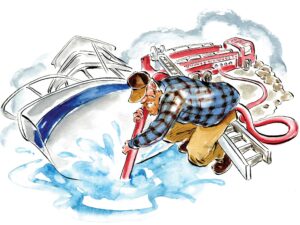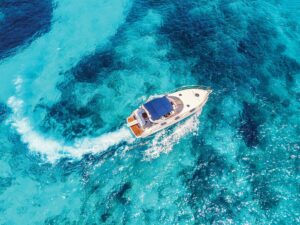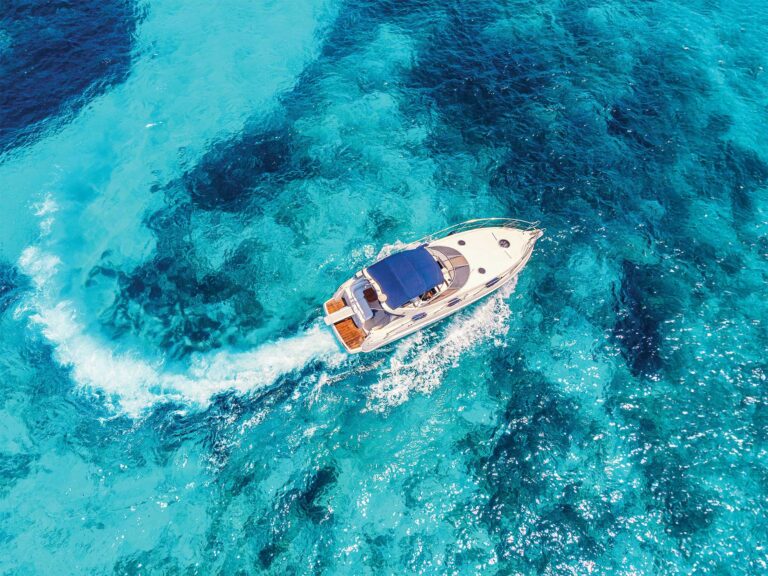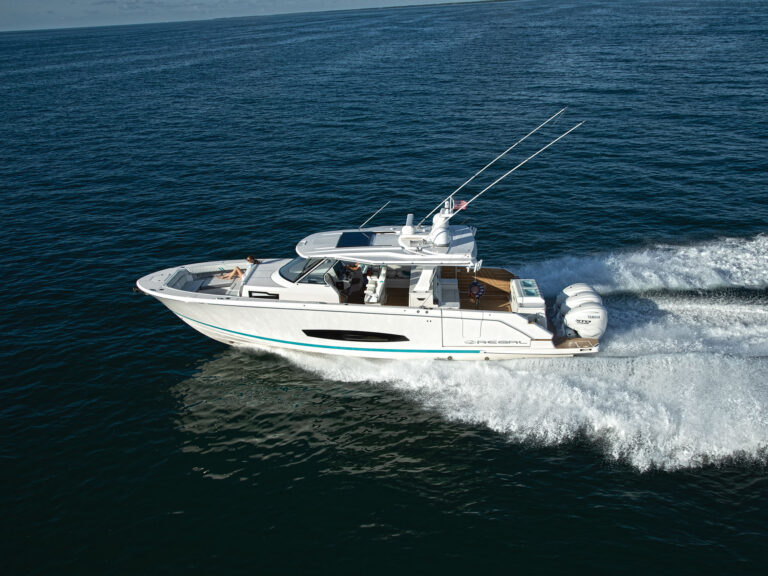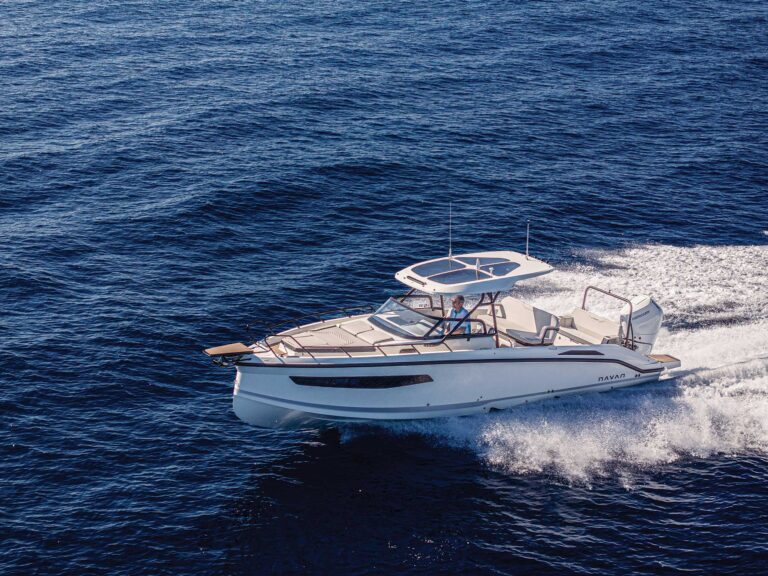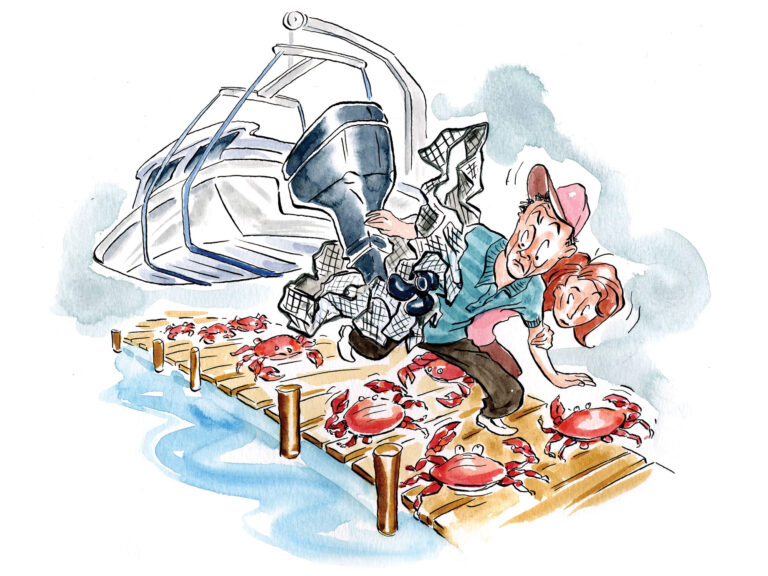LIE NUMBER ONE: A stainless-steel prop is better than aluminum. Stainless steel is stronger than aluminum so the blades can be thinner and can spin with less drag. This translates into more speed and brisker acceleration. However, if the prop hits something hard, the impact could transmit into the lower unit and damage the gears. If you boat on a lake with a rocky bottom and low water levels, you’re better off with an aluminum prop, which won’t gouge your wallet if it needs to be repaired.
THE RIGHT PROP WILL MAKE YOUR BOAT 10MPH FASTER. Maybe, but don’t bet on it yet. Speed is directly related to horsepower and weight. Although a stainless-steel prop generally delivers better performance than an aluminum one, unless you reduce the wetted boat surface by eliminating weight, the boat will only gain 3 to 5 mph. In addition to weight, a boat’s running angle, engine trim angle, and drive height have a bearing on performance.
IF PROP VIBRATIOPNS OCCUR ONLY AT CERTAIN SPEEDS, AVOID THOSE SPEEDS. Not so fast. A prop is tuned and pitched like an instrument. If a blade is slightly out of true, it will send vibrations. Some are undetectable, whereas others will be felt in the steering wheel or with your feet on the deck. Although the vibrations may fade as speed increases or decreases, harmonics are still in play. These forces eventually fatigue the metal to the point where a blade can shear off without warning.
VENTILATION CAUSES A PROP TO PERFORM BETTER. There’s good and bad ventilation. Some high-performance props are designed with small ventilator holes, which aerate the water so the blades can spin freely and produce rapid acceleration. That’s good ventilation. Bad ventilation occurs when air from the exhaust or from the surface of the water flows over the prop blades. The air causes the prop to lose its grip on the water and spin wildly until the drive is lowered, the air is evacuated, and the prop gets a better bite.
IF THREE BLADES ARE GOOD, FOUR ARE BETTER. Three-bladed props give solid all-around performance. But four-bladed props are smoother and produce better acceleration. They also exhibit less vibration, deliver stronger midrange performance, and are less prone to bad ventilation. But there’s no free lunch. Four-bladed props cost more and don’t usually deliver as much top-end speed.
IF A PROP LOOKS FINE, IT DOESN’T NEED TO BE RECONDITIONED. A nick or a slight change in blade pitch (pitch is the theoretical distance a prop covers in one revolution) caused by a weakening of the metal can affect performance. If the blade edges are scuffed and missing paint, the irregular surfaces can contribute to erosion of the metal. The cost of reconditioning is about half the price of a new prop.

